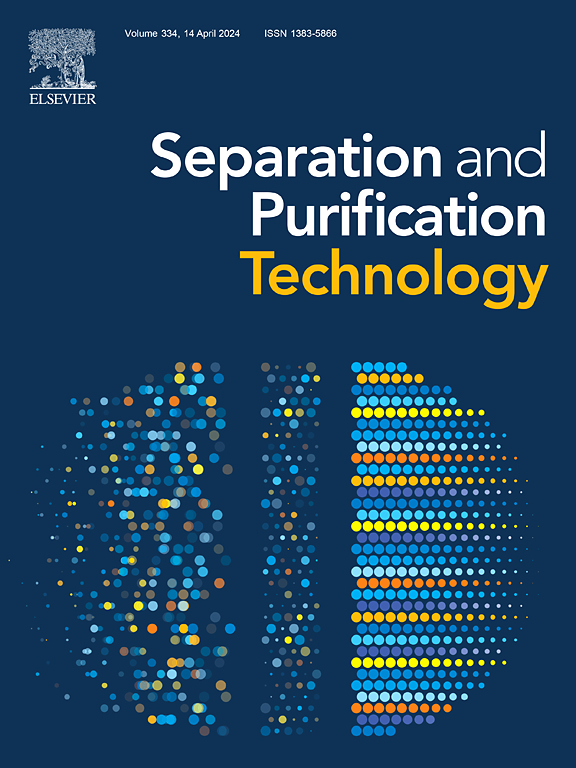Construction of a Fe-Ce-OV coordination environment on in situ exfoliated layered double hydroxide nanosheets and its application in the resource utilization of low-concentration SO2 flue gas
IF 8.1
1区 工程技术
Q1 ENGINEERING, CHEMICAL
引用次数: 0
Abstract
The reduction of SO2 to elemental sulfur using CO is an effective approach for comprehensively utilizing flue gas generated by the non-ferrous metal smelting industry, while simultaneously enabling the resource recovery of sulfur. Existing research has demonstrated that non-thermal plasma (NTP)-enhanced catalysis is an effective method for utilizing SO2, and enhancing the adsorption–desorption process is key to promoting the Eley–Rideal (E-R) and Langmuir–Hinshelwood (L-H) mechanisms. Based on this concept, a MgAl layered double hydroxide (LDH) loaded with bimetallic Fe and Ce active sites was exfoliated using Ar plasma to generate ultrathin FeCe/MgAl-LDH nanosheets. In addition, oxygen vacancies (OV) were introduced into the ultrathin MgAl-LDH nanosheets, ultimately constructing a P-FeCe/MgAl catalyst with a Fe-Ce-OV coordination environment. The ultrathin FeCe/MgAl-LDH nanosheets facilitated the exposure of abundant basic/active sites, thereby enhancing the adsorption and activation of SO2 and its reaction intermediates. Moreover, the Fe-Ce-OV coordination environment shifted the reaction pathway toward the reduction of carbonyl sulfide (COS), leading to a SO2 reduction efficiency of 79% under ambient pressure at low temperatures. Overall, the results of this study demonstrate that enhancing the adsorption–desorption process is an effective strategy for reinforcing the E-R and L-H reaction mechanisms, while in situ exfoliation and the construction of coordination environments further promote SO2 adsorption/conversion and enable directional control over the reaction pathway.
求助全文
约1分钟内获得全文
求助全文
来源期刊

Separation and Purification Technology
工程技术-工程:化工
CiteScore
14.00
自引率
12.80%
发文量
2347
审稿时长
43 days
期刊介绍:
Separation and Purification Technology is a premier journal committed to sharing innovative methods for separation and purification in chemical and environmental engineering, encompassing both homogeneous solutions and heterogeneous mixtures. Our scope includes the separation and/or purification of liquids, vapors, and gases, as well as carbon capture and separation techniques. However, it's important to note that methods solely intended for analytical purposes are not within the scope of the journal. Additionally, disciplines such as soil science, polymer science, and metallurgy fall outside the purview of Separation and Purification Technology. Join us in advancing the field of separation and purification methods for sustainable solutions in chemical and environmental engineering.
 求助内容:
求助内容: 应助结果提醒方式:
应助结果提醒方式:


